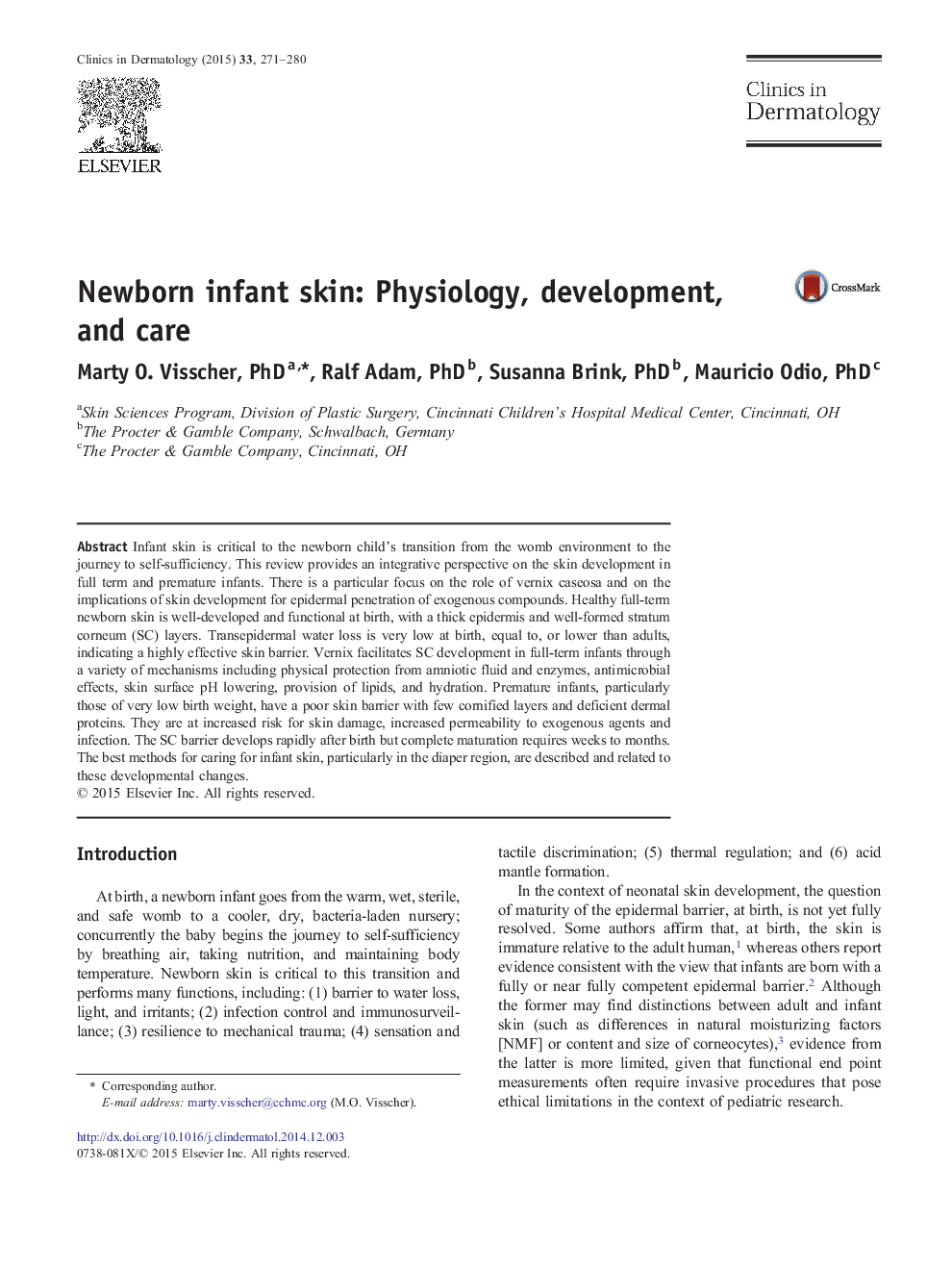| کد مقاله | کد نشریه | سال انتشار | مقاله انگلیسی | نسخه تمام متن |
|---|---|---|---|---|
| 3194087 | 1201376 | 2015 | 10 صفحه PDF | دانلود رایگان |
Infant skin is critical to the newborn child’s transition from the womb environment to the journey to self-sufficiency. This review provides an integrative perspective on the skin development in full term and premature infants. There is a particular focus on the role of vernix caseosa and on the implications of skin development for epidermal penetration of exogenous compounds. Healthy full-term newborn skin is well-developed and functional at birth, with a thick epidermis and well-formed stratum corneum (SC) layers. Transepidermal water loss is very low at birth, equal to, or lower than adults, indicating a highly effective skin barrier. Vernix facilitates SC development in full-term infants through a variety of mechanisms including physical protection from amniotic fluid and enzymes, antimicrobial effects, skin surface pH lowering, provision of lipids, and hydration. Premature infants, particularly those of very low birth weight, have a poor skin barrier with few cornified layers and deficient dermal proteins. They are at increased risk for skin damage, increased permeability to exogenous agents and infection. The SC barrier develops rapidly after birth but complete maturation requires weeks to months. The best methods for caring for infant skin, particularly in the diaper region, are described and related to these developmental changes.
Journal: Clinics in Dermatology - Volume 33, Issue 3, May–June 2015, Pages 271–280
